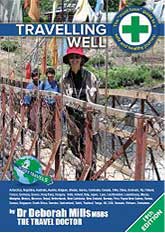Yellow fever is a serious disease, which occurs in tropical Africa and Latin America. 900 million persons live in areas at risk of this disease. There is no cure for Yellow Fever, and up to 50% of severely affected persons without treatment will die.
Current estimates indicate Yellow Fever kills 30,000 people every year, with about 200,000 reported cases of illness. There have been deaths in unvaccinated tourists visiting risk areas.
The number of yellow fever cases has increased over the past two decades due to declining population immunity to infection, deforestation, urbanization, population movements and climate change.
The disease, Yellow Fever is caused by a virus and spread to humans by the bite of an infected mosquito. Three to six days after the bite, the sufferer develops sudden onset of fever. Many cases are mild, last less than a week, and the person makes a full recovery. Sometimes the disease may be more serious.
The liver may be damaged leading to jaundice – a yellowish tinge to the skin and eyes, hence the name ‘yellow’ fever.
The disease may cause joint pain and vomiting. Eventually the clotting system fails and bleeding occurs from the nose, gums, stomach and skin. Death usually occurs 7 to 10 days after the onset of the illness.
Yellow fever is difficult to recognize, especially during the early stages, and can be easily confused with other diseases including malaria, typhoid, rickettsial diseases, hemorrhagic viral fevers, dengue fever, and viral hepatitis. Diagnosis of yellow fever requires a blood test and trained staff using specialized equipment and materials.
Once upon a time, yellow fever was one of the great plagues of the world and there are still periodic outbreaks. The Yellow Fever disease arose in West Africa. It survives in the monkeys of the high jungle canopy without apparent adverse effects. Europeans are believed to have spread the disease to the Americas via mosquito larvae in the ships water barrels. The last major outbreak in the US was in 1905 in New Orleans. Although the disease has been eradicated from North America it still occurs in South America.
 TRAVELLING WELL
TRAVELLING WELL
Whether your overseas getaway involves five-star comfort, or being far off the beaten track, or anywhere in between, this book by Dr Deborah Mills is your invaluable travelling companion. More info…
A vaccination certificate may be required to enter an infected country, and/or when leaving an infected country and entering the next (non-infected) country.
In many cases officials only check the International Vaccination Certificate if there is an outbreak in progress.
Various Yellow Fever news sources provide details of current outbreaks.